Special places to experience nature’s most spectacular show
Nature is pulling out all the stops before winter settles in. Get front row seats at our wetland centres and immerse yourself in a performance that will lift your mood, engage your senses and have you awestruck with the sheer splendour.
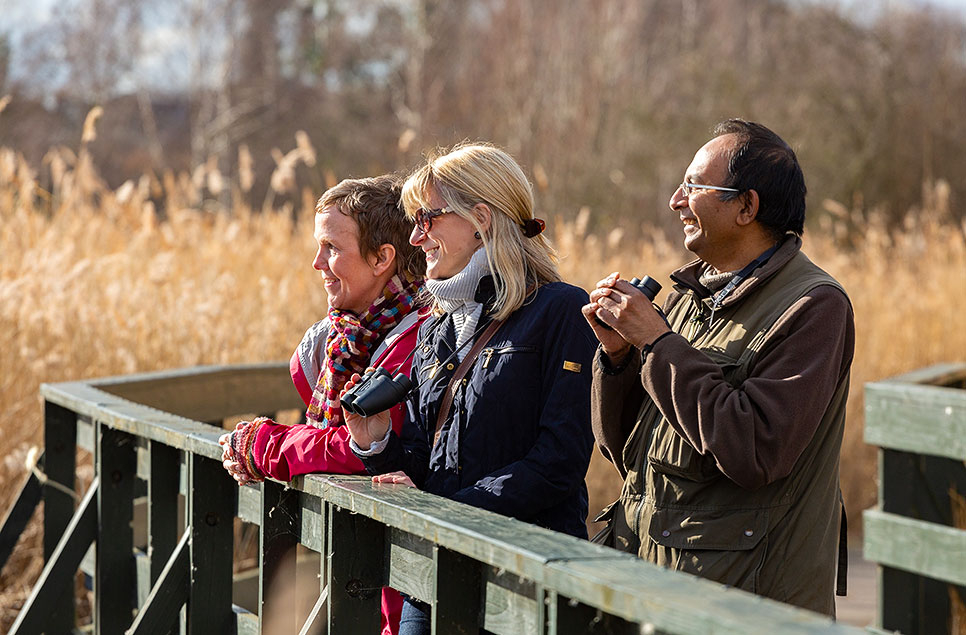
Nature is pulling out all the stops before winter settles in. Get front row seats at our wetland centres and immerse yourself in a performance that will lift your mood, engage your senses and have you awestruck with the sheer splendour.
Relax to the song of the reedbeds
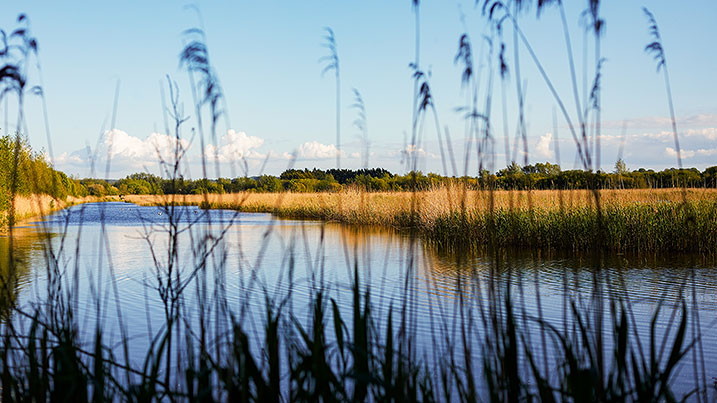
There’s something magical about the whispering of reeds in the winter sunlight. At WWT Arundel there’s a little path we particularly love that takes you to the Reed Chamber in the carr woodland. It’s a lovely quiet hideaway where you can listen to the reeds whispering their secrets. During the winter the reeds are crisp and dry and they sound different in the wind. Their hollow stems provide shelter for insects and small wetland birds like the elusive Cetti’s warbler which are often heard, but rarely seen. Take your time to listen for their song as they perch in the gently swaying reeds and immerse yourself in the whisper of nature. Reed beds are an essential part of the wetland landscape so you’ll find them at most of our centres.
Applaud the abundance
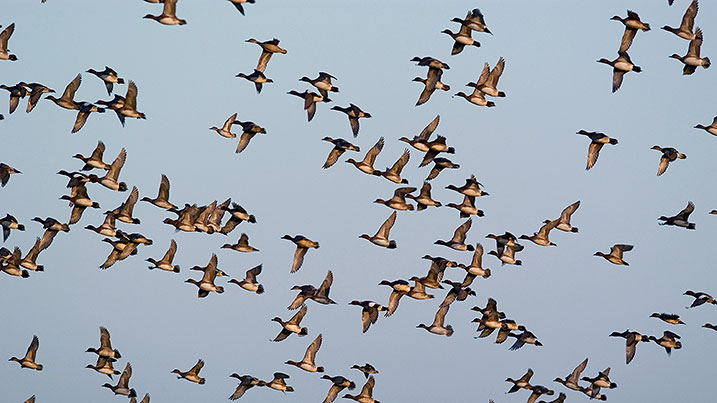
Sometimes, when you look across our wetlands at this time of year, you can’t help feel that nature is showing off a little. The bright berries dripping from the bushes, the weird and wonderful fungi sprouting from trees and let’s not forget the cobwebs that stop us in our tracks as they shimmer in the early sunlight of a cold morning. If you love the abundance of this season as much as we do WWT Llanelli holds a special treat for you. Head to the lagoons nearest to the estuary on our reserve where the birds gather in impressive numbers and see greenshank, black-tailed godwit, great white egret, wigeon, teal, shoveler, kingfisher and curlew. Spending time in the hides around Deep Water Lake is your best chance to spot wild otters who have become regular, if elusive, visitors. The banks also contain several burrows used by water voles, and the islands provide nesting sites for lapwing.
Find out more about the wild side of Llanelli.
Premier viewing point
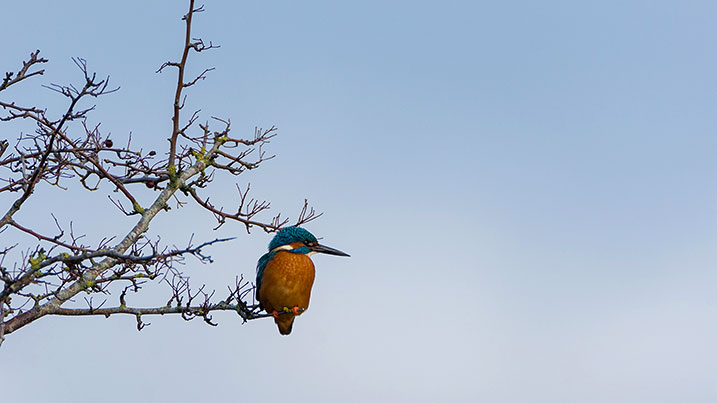
You really can get the best seats in the house at WWT Washington. Our comfy waterside hides around Wader Lake are the perfect place to immerse yourself in the best wildlife of the season. Sit quietly and immerse yourself in the comings and goings of black-tailed godwit, greenshank, knot and various sandpiper. Whilst you’re peacefully whiling away your time spot snipe and whimbrel dropping in to refuel on their annual journey to their overwintering grounds. And as the sun begins to dip you may be treated to a skein of majestic geese passing noisily overhead. As the season closes in, our biggest wild spectacle – the winter curlew roost – starts to build, peaking in January and February with flocks of more than 1,200 swooping down to the lake at dusk to roost alongside redshank and teal. It’s the largest freshwater inland curlew roost in the UK and the sights and sounds are not to be missed.
Kingfisher sightings also increase during the autumn – take a look at our tips on where to spot one at WWT Washington.
Spend time with old friends
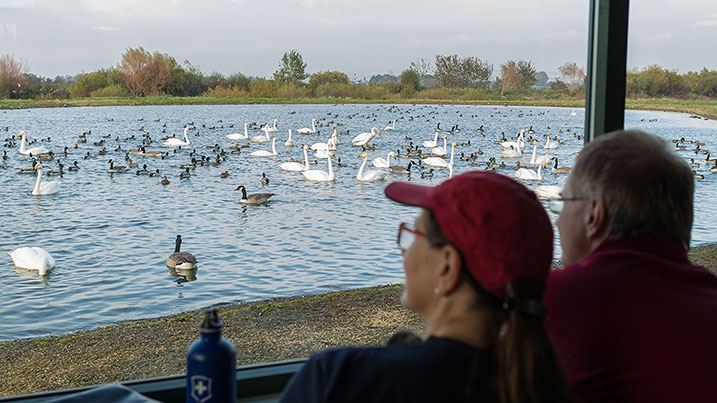
We’re lucky enough at many of our centres to have the same birds overwintering with us each year. Many of them we welcome back like old friends, knowing the amazing journeys they’ve undertaken to spend the winter with us. At WWT Caerlaverock we wait with baited breath for the return of the barnacle geese and whooper swans that return every year. When we hear the familiar whomp-whomp of a skein of geese overhead we can feel our hearts lift just a little at the sight of familiar faces (or bills), especially when we’re treated to the sight of young family members in tow. It’s hard not to feel a little humbled when thinking about the long, treacherous journeys they’ve made to get here.
Enjoy an early-showing
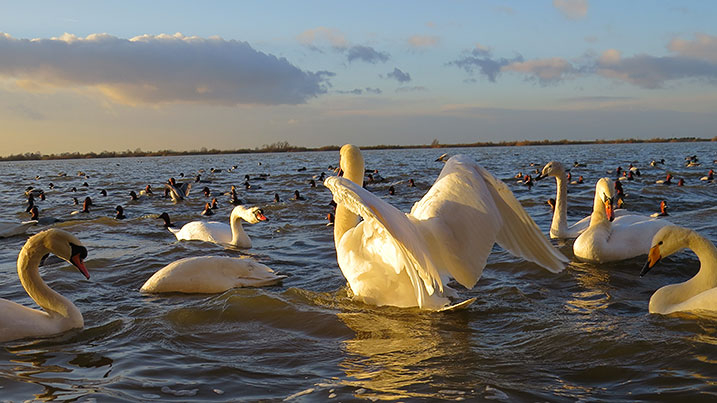
The beautiful big skies of the fens provide the perfect backdrop for taking in the grace and magnitude of the swans that spend the winter here each year. WWT Welney’s swan events are designed to enable you to see these birds at their most magnificent. Our Swan Feeds are a great way to see the birds as they come in to roost and to learn more about the amazing journeys they make every year. Watching a flock of whooper swans appear in the gathering dusk is an autumn spectacle never to be forgotten. Or join our warden before dawn for our Swans Awake events and start your day with the stunning sight of thousands of swans taking flight over the haunting landscape of the Fens.
Insider tip: It’s worth planning for a slow approach to the visitor centre once you’re in the Fens, looking out for swans, geese, cranes and birds of prey like marsh harrier and barn owls as flocks are often feeding in fields close to the washes.
Take a walk on the wild side
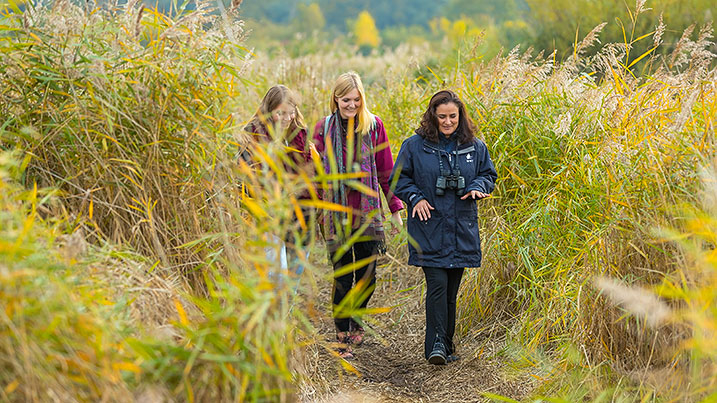
Our reserves are a place where you can carve out your own personal experience with the natural world. Whether it’s sitting on a bench in the low autumn sun, seeking out the remotest hide or exploring some of the wilder places on a nature walk, you’ll find what you need to experience that connection with nature. At WWT London Wetland Centre you can certainly experience two sides of the reserve. The wild windy wetland, full of surprises and unexpected migrants and the tamer, milder marshland where avian melodies are amplified through still branches and static yellowing leaves. They’re both as entrancing as each other. There are already brilliant numbers of migrant birds on the reserve this autumn and the wintering ducks - shoveler, teal, wigeon and gadwall – are a sight to behold. A great spot to see all of this and more is from the Peacock Tower. It overlooks the main lake, grazing marsh and the wader scrape, giving far reaching views across this magical urban wetland.
Find out more about this haven of tranquillity.
Birds’ eye view
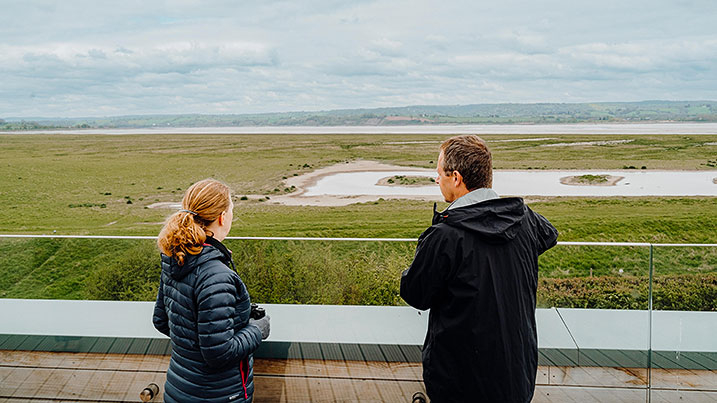
WWT founder, Sir Peter Scott called WWT Slimbridge the ‘avian Serengeti’ thanks to the vast number of wild birds here. During the autumn, numbers build and build until by winter you can see around 30,000 wild ducks, geese and swans using the wetlands as a place to feed and roost. It’s now that we feel the excitement of the first arrivals. Watching them feeding peacefully on the wetlands it’s hard to imagine the long hazardous journeys they make. The Estuary Tower Hide is the perfect place to watch all that’s going on in comfort, it’s fully accessible, close to our visitors centre and our ‘guides in the hides’ will be on hand to share their knowledge about the landscape and the wildlife. And if you’re a wildlife photographer it’s the perfect place to capture that magical late autumn light. Capture the best photos you can with our top tips.
Flock together
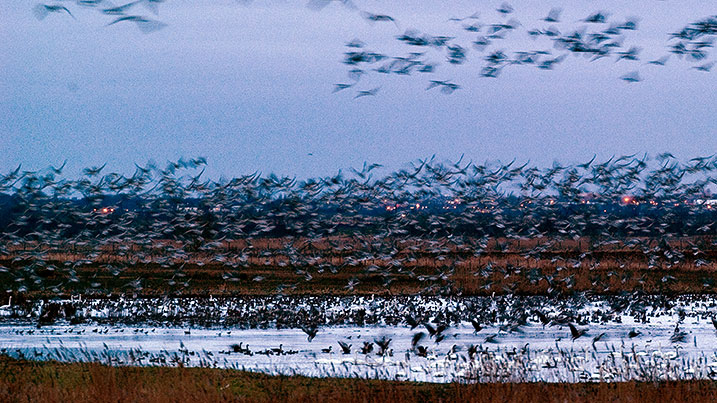
Migration is in full swing at WWT Martin Mere*. We are open and welcoming back visitors again after a temporary closure due to avian influenza. Don’t miss the migrant flocks of pink-footed geese, wigeon and whooper swans that take to the skies in great swathes of colour. Pink-footed geese return to our wetlands in huge numbers at this time of year. They use the reserve as a ‘service station’ to rest and refuel before they continue with the challenging task of migration. As many as 40,000 geese use the reserve as a safe roosting point, flying in and out if the reserve as weather and food dictates, creating a magical display of feather and flight. .
Find out more about what to see when you visit Martin Mere
For tips and tricks on special places to enjoy around the reserve, join a guided walk on Tuesday and Thursdays
*Whilst we are very pleased to be able to open again to visitors, a section of our site must remain closed temporarily. We’re keeping this page updated with the latest information.
Find sanctuary at Strangford Lough
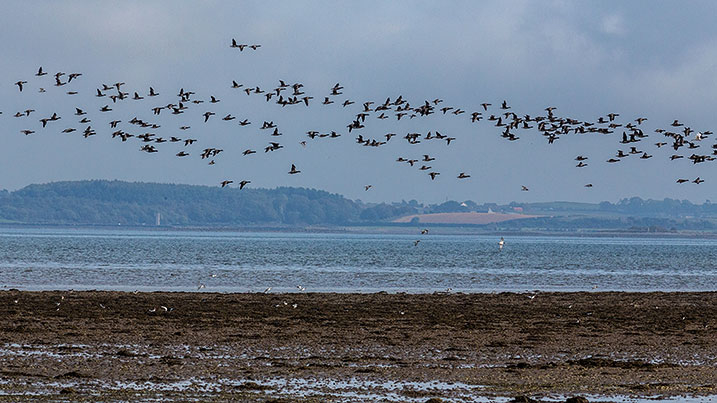
Although *WWT Castle Espie is currently temporarily closed to visitors, you can keep up to date with the latest sightings on our website so you can still enjoy the sanctuary of Strangford Loch, albeit virtually. This is the time of year when 90% of the world’s population of light-bellied brent geese arrive in Northern Ireland, with Strangford Lough being their favourite staging post. These small geese take on the largest migration journey of any goose, travelling 2,900 miles from the high Canadian arctic. When we’re open the Brent Discovery Hide offers the best vantage point for viewing wildlife on Strangford Lough and you can choose from a number of walks too, from shore-side to woodland. We’re looking forward to welcoming you again soon and connecting you with wonderful wetland nature
*Castle Espie Wetland Centre is currently temporarily closed due to a case of AI confirmed at this centres. Sadly cases of avian influenza are widespread across the UK and we’re working hard with the relevant government agencies to prevent the spread of this bird disease. Please check the centre webpages to find out when we can welcome you again.
Don’t miss the show
Find your nearest Wetland Centre and enjoy nature’s spectacle at our special places this autumn.
Plan your visitInformation correct at time of publishing.



